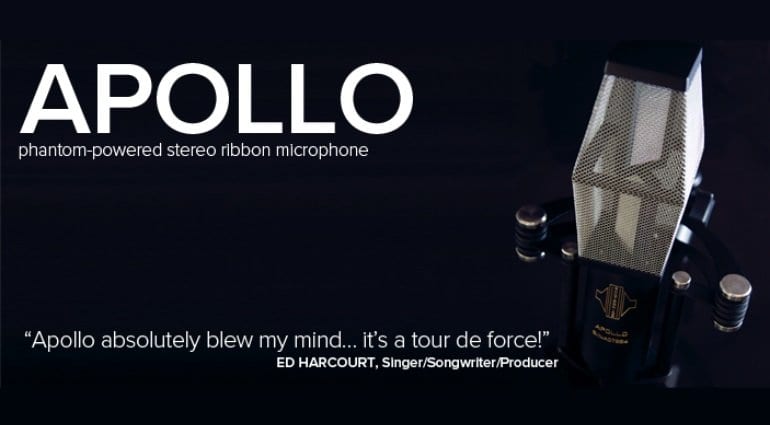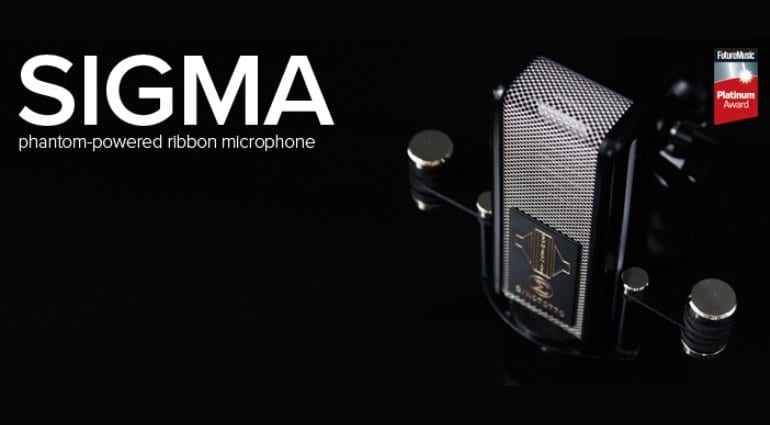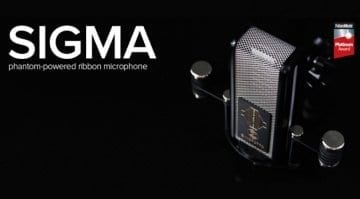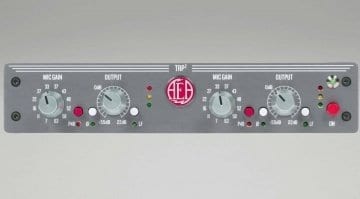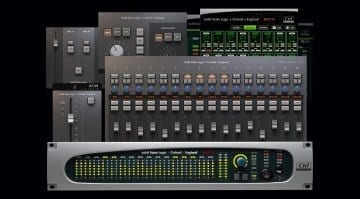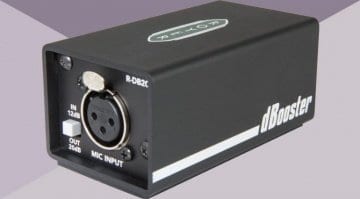NAMM 2018: Sontronics re-envisions its Apollo, Delta, and Sigma ribbon mics
At NAMM 2018, British mic maker Sontronics announced revisions of its finely aged ribbon microphones – the Sigma, Delta, and Apollo. All three models have been completely revised, rebuilt, and improved with redesigned circuits, hand-wound transformers, and precision-engineered body parts. Everything is made in Sontronics’ hometown of Poole, Dorset.
The result of Sontronics’ microphone “remaster” is a trio of better, richer, fuller-sounding mics that, according to the company, retain all the originals’ positive characteristics. Here’s more about each mic:
Apollo stereo ribbon microphone
Apollo is a natural-sounding, smooth, open mic — claims Sontronics. The microphone is supposed to sound great on overheads and room recordings. It was created after Sontronics found out that many recordists were using the Sigma ribbon mics in stereo pairs. The company decided to make a standalone stereo ribbon microphone, and the result is Apollo. Its architecture is based on a pair of ribbon motors with highly-sensitive, micron-thin aluminium ribbon elements set in a typical Blumlein X-Y formation within an angled open grille cage. The latter’s design takes the silhouette of a skyscraper for inspiration. Additionally, the microphone’s design makes it possible to isolate one or more of the ribbons and record in mono if one wishes to. This is accomplished using its two-way cable.
Delta ribbon mic for guitar amps and brass
Based on the Sigma mic, the Delta was designed for recording guitar amplifiers and brass instruments. Compared to its predecessor, the Delta presents a more rugged build with extra baffling inside the rectangular grille. Sontronics also modified the frequency response with a subtle presence peak between 2kHz to 4kHz, compensating for the typical distorted guitar sound’s tendency to bite. What’s more, the microphone’s bias towards mid-range frequencies makes it suitable for brass instruments as well – especially the trumpet, trombone, horns, alto, tenor, and baritone saxophone.
Sigma phantom-powered ribbon mic
The Sigma was a novel concept when it first came around about 10 years ago. Whereas most ribbon mics are passive (transformer-based), Sigma is phantom-powered. This allows for greater consistency when using the mic with different preamps. Sigma also boasts low self-noise and excels at sources with high-frequency bias, such as solo woodwind and string instruments. As mentioned before, the Sigma can be used in pairs for effective drum overhead and room miking – both in X-Y formation and spaced separately. Overall, a great combination of vintage and modern microphone design with many applications in the studio.
Price and availability
Pricing for the revised Apollo, Delta, and Sigma hasn’t been announced yet. We are reaching out to Sontronics for more information and will update the article if we hear back. We know, however, that all mics ship in ABS flightcases with shockmounts, and happen to be covered by a Lifetime Warranty. In production now, the mics will be available in February.
Update: Sontronics got back with prices. UK street price (including VAT) will be 729 GBP for the Sigma 2 and Delta 2, and
1599 GBP for the Apollo 2.
More information
Video
You are currently viewing a placeholder content from YouTube. To access the actual content, click the button below. Please note that doing so will share data with third-party providers.

